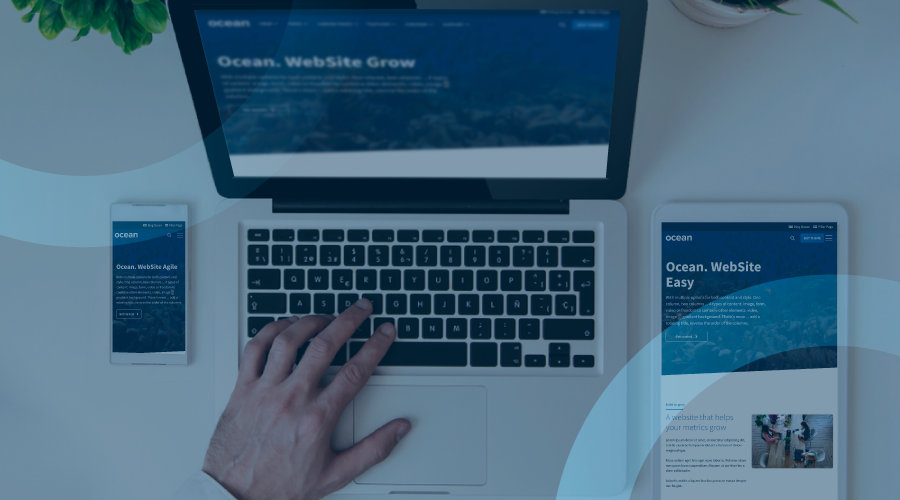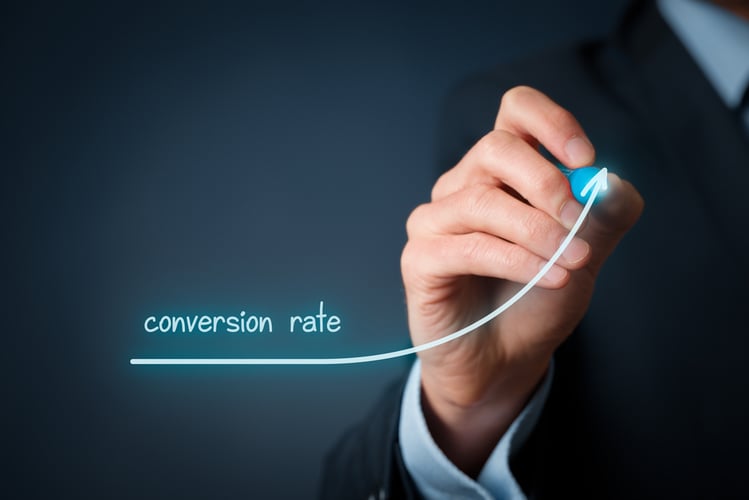Did you know that the design of your website is a determining factor in its success? Websites are the digital face of a company and the main channel of communication with customers.
Therefore, it is essential to carefully consider the type of image we want to project to our visitors.
In this article, we will explore the importance of website design and how it can help you convert leads into real customers.
What is web design?
Web design is a discipline that focuses on the creation and development of websites with the aim of providing an optimal user experience.
This process involves both visual and functional aspects and is based on the combination of multiple components working together to achieve an attractive appearance and efficient performance.
Some key points to consider when implementing this discipline are as follows:
a) Graphic Design
Graphic design is the visual part of web design and includes the selection of typography, colors, images, and the arrangement of elements on the page.
It has a significant impact on brand identity and how users perceive and engage with the business, making it crucial.
b) User Interface (UI) Design
One of the things to consider is user interface design, which focuses on the interaction between the user and the website.
The goal is to develop an interface that is easy to use, intuitive, and consistent, allowing users to navigate and perform actions efficiently on the page.
c) User Experience (UX) Design
This design is centered around understanding and anticipating the needs and expectations of users.
Its goal is to provide a satisfactory browsing experience that motivates people to stay on the site and ultimately become customers.
d) Responsive Design
Responsive design is a technique that allows a website to adapt its design to different devices and screen sizes.
It is important because responsive design ensures that the site is accessible and functional on smartphones, tablets, and computers, offering a consistent user experience across all devices.
e) Content Design
This key point refers to the organization and presentation of information on a website, including the writing, structure, and style of texts, as well as the arrangement of images, videos, and other multimedia elements.
Good content design facilitates understanding and assimilation of information by users.
f) Web Development
Finally, this aspect involves the technical part of web design, including the programming and coding required to build and maintain the site, incorporating programming languages such as HTML, CSS, and JavaScript.
It also includes the implementation of specific functionalities and features of the site.
Web design is a combination of artistic and technical skills that aim to offer an attractive, functional, and accessible experience for users.
Focusing efforts to achieve the best design is essential to guarantee the success of any online business and convert leads into loyal customers.
Why is website design important?
The design of a website plays a crucial role in the success of any online business.
While there are many reasons why web design should be implemented, the following points can be mentioned:
1. First Impression
First and foremost, design is the first impression that visitors have of your business.
Therefore, it is important to focus on offering an attractive and professional design that can generate trust and credibility, and to avoid displaying a sloppy or outdated design that ends up driving visitors away.
2. User Experience
We have seen the importance of user experience, and web design should aim to improve this aspect during site navigation and information search.
A positive user experience can increase the time spent on the page, which in turn can improve conversion rates and customer loyalty.
3. Brand Consistency
Another key point is that design has the responsibility to reflect the identity of your brand and maintain consistency with other visual elements.
These elements can include logos, colors, typography, among others. The important thing is to strengthen the brand image and create an emotional connection with all visitors.
4. Accessibility
It is important to consider that not all users have the same abilities, so ensuring accessibility in website development is essential.
This is not only ethically correct, but it can also broaden your audience and improve your business's reputation.
5. Loading Speed
Loading speed is a crucial element that largely determines user acceptance and frequent visits.
A site that takes too long to load can frustrate users and lead them to abandon the page.
The solution to this problem is to offer an optimized and efficient design that ensures fast loading times, which in turn can improve conversion and retention rates.
6. Mobile Optimization
With the growing use of mobile devices to access the internet, it is essential that your website is optimized for viewing on smartphones and tablets.
This is where the importance of responsive design lies, as it adapts the design to different screen sizes, facilitating navigation and ensuring a consistent user experience across all devices.
7. SEO (Search Engine Optimization)
SEO is a crucial point to consider because an effective SEO strategy is also fundamental for the ranking of your website on major search engines.
If the design has an optimal organization and structure, it opens up the possibility for the content to be indexed, resulting in better search engine rankings and, consequently, increased organic traffic.
For these reasons, the design of a website is essential as it can make a difference in lead generation and customer conversion, leading to greater success for your online business.
Advantages of designing an appropriate website
Designing an appropriate website is crucial for the success of any online business. In addition to its importance, there are many advantages to consider when deciding to optimize your website.
Among the main benefits, we find the following:
1. Generates Trust and Credibility
A well-designed and professional website instills trust and credibility, which can increase the likelihood of visitors becoming customers.
Furthermore, a design that is consistent with your brand's identity strengthens its image and helps build long-term loyalty.
2. Facilitates Interaction and Communication with Users
If a website has an optimal design, it is likely to include interactive elements such as contact forms, live chat, and social media, allowing users to easily communicate with you.
3. Reduces Bounce Rate
An appropriate design can significantly reduce the bounce rate, which is the percentage of users who leave the site after viewing only one section.
Having a low bounce rate is an indicator that people are interested in exploring the site, and they are more likely to convert into customers.
4. Facilitates Updating and Maintenance
With a well-designed website, you can easily update and maintain pages over time, ensuring optimal performance.
Now that you know the benefits of implementing good web design on your website, it is important to understand the elements that determine its functionality, attractiveness, and optimization.
Web Design and Key Elements
Web design is a process that combines several key elements to create attractive, functional, and highly accessible websites.
Among these important considerations, the following elements stand out:
a) Typography
Typography is one of the most important elements in web design as it influences the readability and overall appearance of the site.
Choosing the right font, size, style, and spacing can enhance the reading experience for users and reinforce the brand's identity.
Some key considerations when selecting typography include:
- Legibility: Choose fonts that are easy to read and adapt well to different screen sizes and devices.
- Consistency: Use a consistent combination of fonts throughout the site to maintain a uniform and professional look.
- Personality: The typography should reflect your brand's personality and align with the overall aesthetics of the site.
b) Colors
Colors play a fundamental role in web design as they can influence users' emotions and how they perceive your brand.
Remember that you should choose an appropriate color palette that takes into account the following aspects:
- Brand identity: Colors should be consistent with your brand's identity and the message you want to convey.
- Contrast: Use appropriate contrasts between text and background to ensure readability and avoid visual fatigue.
- Emotions: Take into account the psychological effect, as colors can evoke specific emotions in users.
c) Proper Use of Images
Images are an essential component as they can grab users' attention, convey information efficiently, and enhance the overall appearance of the site.
It's important to consider the following points when reviewing your intended strategy:
- Quality: Use high-quality and high-resolution images to ensure a professional appearance.
- Relevance: Ensure that images are relevant to the content and context of the site.
- Optimization: Compress images to reduce file size and improve site loading speed.
d) Optimal Navigation
This is a crucial aspect to consider in web design as it allows visitors to efficiently and effectively find and access information on your website.
To improve this key aspect of design, consider the following points:
- Clarity and ease of understanding: Use descriptive labels and organize navigation options logically.
- Consistency: Maintain consistent navigation across all pages to facilitate user orientation and usage.
- Accessibility: Ensure that navigation is accessible to all users, including those with disabilities.
e) SEO
SEO (Search Engine Optimization) is an essential component of web design that helps improve the visibility of your site on search engines.
It is a critical aspect, and it's necessary to start implementing strategies and following recommendations to drive more traffic to your website.
Some key elements of SEO include:
- Structure: Organize content in a hierarchical and logical structure, using heading tags (H1, H2, etc.) to highlight main topics and subtopics.
- Keywords: Research and use relevant keywords throughout the content, including in titles, headings, and meta tags, to facilitate indexing by search engines.
- Internal linking: Use internal links to connect related pages within your site, which helps improve navigation and distribute link authority throughout the site.
By paying attention to each of these aspects, you will undoubtedly improve the user experience by strengthening your brand identity and increasing the visibility of your site on search engines, gradually leading to the success of your online business.
Tips for Designing Your Website
Designing a website can be a somewhat challenging task, especially if you lack experience in the required field.
However, there are some points you should start with to initiate this implementation, and with the help of an expert or a theme designed for self-use, you can create something that meets your expectations.
1. What is the purpose of my website?
One of the first questions you should ask is the purpose behind creating this communication channel.
Do you want to inform, sell products, offer services, or build a community? Clearly defining the purpose of your website will help you make informed decisions about its structure, design, and content.
2. Who is my target audience?
Another key question is who the content is aimed at. It is crucial to know your audience in order to create something that caters to the needs of each user.
Research your audience and create different profiles to understand their preferences, behaviors, and needs. This will allow you to design a site that aligns with their lifestyle, interests, and values.
3. Get feedback from acquaintances on the design
Another tip you can consider is to show the designed page to friends, colleagues, or your target audience and ask for their opinion.
User feedback can provide valuable insights into usability, navigation, and overall appearance of the site.
Use these comments to make adjustments and improvements to the design before officially launching it.
4. Keep the design simple and clean
A simple and clean design facilitates navigation and information search on the site. Therefore, avoid overwhelming users with too many visual elements or unnecessary animations.
Instead, focus on providing a clear and consistent design that enhances the user experience and highlights the most important content.
Conclusion
The design of a website is fundamental to the online success of any business.
By considering elements such as typography, colors, images, navigation, and SEO, you can create an attractive, functional, and accessible website that captures the attention of your target audience and keeps them engaged.
We understand that designing a website can seem overwhelming, especially if you are a beginner.
That's why we are pleased to invite you to explore HubSpot's Ocean Theme, a solution designed to simplify the creation of professional websites. With intuitive customization options, you can design like an expert without needing technical knowledge.
Imagine being able to design a website that perfectly reflects the essence of your brand and attracts your visitors, effortlessly and efficiently. Don't wait any longer to improve your online presence and take the leap towards success.

.png?width=319&height=267&name=gtmetrix_2023%20(1).png)




